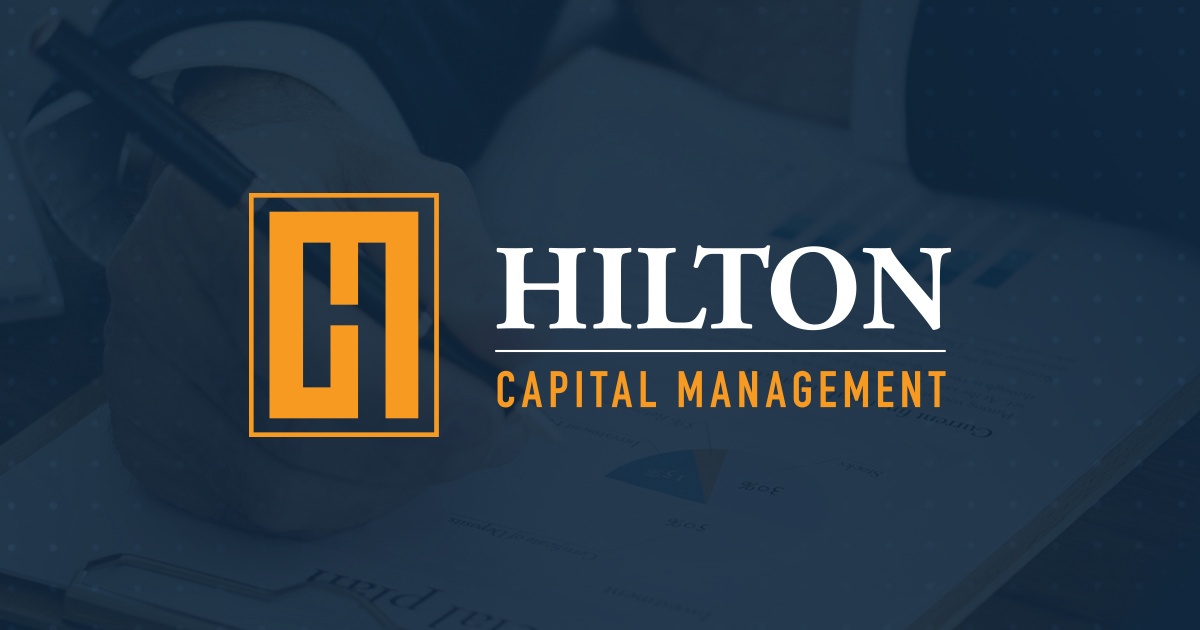Hilton Capital Management
Understanding Active ETFs
Explore Active ETFs: Learn what differentiates them from other ETFs and why they're becoming increasingly attractive to today's investors.
Contact UsContents
- Introduction to Active ETFs
- A Brief History of ETFs
- Active vs. Passive ETFs: Key Differences
- Benefits of Active ETFs
- Types of Active ETFs
- Choosing the Right Active ETF
- Active ETF Performance Metrics
- Regulatory Environment for Active ETFs
- The Future of Active ETFs
- Hilton Small-MidCap Opportunity ETF (SMCO) Overview
- Conclusion
In recent years, actively managed exchange-traded funds (Active ETFs) have emerged as an increasingly popular investment vehicle, combining professional portfolio management with several key advantages for investors compared to mutual funds. These include enhanced trading flexibility, tax efficiency, and generally lower costs. ETFs also have broader diversification potential versus individual stocks.
What exactly is an Active ETF? Their rapid growth tells a compelling story: While Active ETFs represented just 7% of the ETF market at the start of 2024, they captured 30% of all ETF flows in the first half, attracting $123 billion in new assets.
Let's explore what makes Active ETFs unique and why they're becoming the go-to choice for legions of investors.

Introduction to Active ETFs
An ETF is a pooled investment vehicle (fund) that holds a portfolio of securities.
Investors can buy and sell ETF shares, which represent proportional ownership of the underlying assets and fund performance. Shares are traded on an exchange, such as the New York Stock Exchange (NYSE), Nasdaq, or London Stock Exchange (LSE).
ETFs are issued and managed by asset management firms, investment banks, and other financial institutions and are readily available in developed and emerging markets.
Active ETFs combine the trading flexibility and accessibility of passive exchange-traded funds with professional active management. Unlike their passive counterparts that commonly track an index, active ETF investment professionals make strategic decisions about security selection, sector allocation, and market timing to pursue specific investment objectives.

A Brief History of ETFs
Traditional passive ETFs emerged in the early 1990s as a more cost-effective and flexible alternative to mutual funds (discussed in more detail below).
The first ETF, the SPDR S&P 500 ETF (SPY), was introduced in 1993 by State Street Global Advisors, which tracks the performance of the S&P 500 Index and now includes over $600B in assets under management (AUM).
Actively managed ETFs are a more recent innovation. The first active ETF was launched in 2008, and the industry has experienced significant growth ever since, particularly following regulatory changes in 2019. The U.S. Securities and Exchange Commission’s (SEC) Rule 6c-11 streamlined the launch process for these products.

Active vs. Passive ETFs: Key Differences
Understanding the distinctions between active and passive ETFs is crucial for investors making allocation decisions. Below we touch on some of the major differences, including investment approach, management style, trading and pricing, and cost structure.
At-a-Glance: Active vs. Passive ETF Comparison
|
Feature |
Active ETFs |
Passive ETFs |
|
Management |
Professional managers actively select securities and make tactical decisions based on research and market opportunities |
Mirrors a specific index (like S&P 500) or benchmark with automated buying and selling based on index changes |
|
Costs |
Higher expenses (~0.65%) due to research, active trading, and management team costs |
Lower expenses (~0.11%) due to automated approach with less human intervention |
|
Trading |
Often less liquid with wider bid-ask spreads, which can mean higher trading costs and more price variation from NAV |
More liquid with tighter spreads, making them easier and potentially cheaper to trade |
|
Flexibility |
Can shift to defensive positions during market downturns and capitalize on specific opportunities as they arise |
Must stay fully invested according to index weights regardless of market conditions |
Investment Approach
Unlike passive ETFs that typically track an index or benchmark, active ETFs are managed to align with more dynamic and tailored objectives, such as capital preservation, alpha generation, risk management, income, or other investment theme.
This active management approach enables portfolio managers to adjust holdings and allocations as market conditions and opportunities evolve.
Management Style
When it comes to management style, passive ETFs typically follow a rules-based methodology, automatically replicating their target index's composition with minimal manager discretion and adjusting holdings only when the underlying index changes. This approach offers high operational efficiency, minimizes trading activity, reduces costs, and simplifies portfolio management.
In contrast, Active ETF managers can exercise significant discretion in portfolio construction, actively researching and selecting individual securities, and making tactical adjustments based on market analysis and investment opportunities.
Trading & Pricing
All ETFs generally offer investors enhanced trading flexibility compared to traditional mutual funds. Like stocks, they can be bought and sold throughout the trading day, support various order types, can be purchased on margin, and may be used with options strategies, providing investors with multiple ways to implement and adjust their investment positions.
The share price of an ETF is driven by the value of its underlying assets but can also be influenced by market dynamics. The Net Asset Value (NAV), calculated as the value of the ETF's holdings minus liabilities divided by shares outstanding, serves as the anchor for its price. However, the supply and demand of ETF shares trading in the market can create short-term deviations. Higher demand can push the ETF’s share price above its NAV (a premium), while low demand can result in trading below its NAV (a discount).
Active ETFs often differ from passive ETFs in pricing dynamics due to differences in liquidity, as illustrated below:
- Lower trading volumes: Active ETFs generally have fewer shares traded daily, making them less liquid than passive ETFs.
- Wider bid-ask spreads: The difference between the highest price a buyer is willing to pay (bid) and the lowest price a seller is willing to accept (ask) is often larger in active ETFs due to lower trading activity.
- Greater potential for premium/discount to NAV: Limited liquidity increases the likelihood of prices deviating from the fund’s NAV.
Cost Structure
The cost to invest in an ETF is expressed as an annual expense ratio, calculated by dividing fund net assets by yearly operating expenses.
For example, If an ETF has an expense ratio of 0.50%, you would pay $5 per year for every $1,000 you invest ($1,000 x 0.50%).
Active ETFs typically carry higher expense ratios than passive ETFs due to the costs associated with management, research, and more frequent trading. For instance, while the average passive ETF expense ratio is 0.11%, the average active ETF fee is a higher 0.65% to cover their more hands-on management approach.

Benefits of Active ETFs
Active ETFs offer several advantages that make them attractive to investors.
Easier to Access Than an SMA
A key benefit of active ETFs is their accessibility, enabling investors to participate in professionally managed active strategies with significantly lower minimum investment requirements than other investment vehicles, such as separately managed accounts (SMAs).
Professional Management
Active ETFs combine experienced portfolio management with tactical flexibility, enabling managers to adjust holdings as market conditions change. Portfolio managers leverage their expertise in security selection, employ risk management strategies, and actively seek opportunities to outperform their benchmark一offering investors professional oversight beyond simple index replication.
Transparency
Active ETFs provide investors valuable transparency through daily disclosure of portfolio holdings, real-time pricing information, and clear visibility into how investment strategies are being implemented. This level of transparency enables investors to better monitor their positions and understand how portfolio managers are executing their stated investment approach.
Trading Flexibility
While all ETFs offer trading advantages over mutual funds, such as intraday trading, active ETFs take trading flexibility a step further by leveraging their management approach. Active ETF managers can use this flexibility to adjust holdings in response to market shifts, seize opportunities, or adopt defensive positions during periods of volatility in ways passive EFTs simply can’t due to their passive mandates.
Tax Efficiency
Active ETFs provide unique tax efficiency advantages, including the following:
In-kind creation/redemption process
The in-kind creation/redemption process enables ETFs at the fund level to exchange securities with authorized participants rather than sell them for cash, minimizing capital gains triggered by sales and passed on to investors, thereby enhancing tax efficiency.
This is a distinct advantage over mutual funds, which are often forced to sell securities to meet investor redemptions, resulting in taxable capital gains distributions to the remaining shareholders.
Tax-loss harvesting opportunities
ETFs offer tax-loss harvesting opportunities, enabling managers to sell securities at a loss to offset gains within the portfolio, thus reducing the fund's taxable income. This strategy helps minimize capital gains distributions to investors and enhances the overall tax efficiency of the fund.
Active ETFs can take greater advantage of tax-loss harvesting opportunities due to their flexibility and (often) higher portfolio turnover. This enables managers to strategically realize losses and offset gains. In contrast, passive ETFs, with their lower turnover and index-tracking mandates, are less likely to generate such opportunities.

Types of Active ETFs
Active ETFs span a wide range of investment categories, offering investors diverse options for portfolio construction:
- Equity ETFs cover the market spectrum from domestic large-cap to small/mid-cap stocks, international markets, and specific sectors.
- Fixed income offerings include strategies focused on government, corporate, and municipal bonds, and high-yield opportunities.
- Multi-asset ETFs provide balanced portfolios and risk-managed approaches.
- Alternative strategy ETFs employ specialized techniques and strategies such as long/short strategies, real estate, commodities, volatility-based approaches, private equity, and many more.
This variety enables investors to access professional management across virtually any asset class or investment approach.

Choosing the Right Active ETF
Investors should consider several factors when selecting active ETFs for their portfolios.
Key Investor Considerations
Above all else, investors should determine whether an ETF aligns with their financial goals and personal circumstances. Key factors to consider include:
- Investment Objectives: Whether the ETF focuses on income generation, growth, or capital preservation.
- Risk Tolerance: The level of volatility an investor is comfortable with.
- Time Horizon: Long-term strategies may differ significantly from short-term goals.
- Cost Sensitivity: Expense ratios and trading costs can impact overall returns.
- Liquidity Needs: Ensuring the ETF allows access to funds when needed without significant costs or delays.
Evaluation Criteria
Once you've decided on the type of ETF that fits your investment strategy, compare funds within the same space or with similar mandates to determine which best meets your needs. Criteria to consider include:
- Management Team Experience: Assess the expertise and track record of the managers, especially for active ETFs, as their decisions directly impact performance.
- Historical Performance: While past performance doesn’t guarantee future results, it can provide insights into how the ETF has performed under various market conditions. We discuss performance metrics in detail below.
- Risk-Adjusted Returns: Look beyond raw returns to understand how much risk the ETF has taken to achieve its performance, using metrics like the Sharpe ratio.
- Trading Volume/Liquidity: Higher trading volume generally means tighter bid-ask spreads, making buying or selling shares easier and more cost-effective.
- Expense Ratio: Lower expense ratios can help improve net returns over time, particularly for long-term investments.
- Outperformance (Alpha): Where relevant, evaluate the fund's ability to exceed its benchmark's returns through the manager's investment decisions, ensuring that any alpha generated is assessed relative to the level of risk taken to achieve it.
Due Diligence Process
In selecting an ETF, best practices include following a structured due diligence process, such as the one below:
- Review investment strategy
- Analyze historical performance
- Assess risk metrics
- Evaluate costs
- Consider tax implications

Active ETF Performance Metrics
Understanding how to evaluate active ETF performance is crucial for making informed investment decisions. Some of the key factors are outlined below.
Key Performance Indicators
- Total Return: This is the gain or loss of the ETF over a specific period, including price changes, reinvested dividends, interest payments, and other distributions less the expense ratio.
- Standard Deviation: This measures the ETF’s overall price volatility, providing insight into the range of potential returns.
- Alpha: The ETF’s ability to outperform its benchmark after adjusting for risk, showcasing the manager’s value-add (previously defined).
- Sharpe Ratio: This metric evaluates risk-adjusted returns by comparing the ETF’s excess return to its volatility, indicating efficiency in generating returns (previously defined).
- Information Ratio: Assesses the consistency of the ETF’s outperformance relative to its benchmark, factoring in tracking error.

Regulatory Environment for Active ETFs
Active ETFs are governed by the regulatory framework of the Investment Company Act of 1940 (the Act), which establishes standards for registration, disclosure, and fiduciary responsibilities related to investor protection and market integrity. The SEC oversees compliance with the Act, and key compliance requirements cover the following:
- Transparency: Active ETFs typically disclose holdings daily for greater investor transparency, though a select subset of so-called semi-transparent ETFs, approved by the SEC in 2019, can disclose less frequently to protect proprietary strategies.
- Regulatory Approval: Rule 6c-11 (referenced above) also streamlined the approval process, enabling active ETFs to launch without requiring previously mandated special exemptions.
- Fiduciary & Disclosure Standards: Active ETFs must meet fiduciary standards and provide clear disclosures about risks, fees, and performance to ensure investor protection.
- Trading & Market Regulations: Active ETFs follow the same market rules as traditional ETFs, ensuring fair pricing, liquidity, and alignment with NAV.
Recent Developments
Recent SEC initiatives have enhanced investor protections for ETFs through improved disclosure requirements and updated valuation guidance. The streamlined shareholder reports, adopted in 2022, provide investors with clear, concise insights into fund performance and fees, making critical information more accessible.
Additionally, the SEC’s Rule 2a-5 modernized valuation practices, ensuring fund assets are accurately and consistently assessed, enhancing transparency and trust in the marketplace.
.jpg?width=1800&height=1200&name=HiltonCapitalManagement-Blog-Unpacking-the-Dividend-%26-Yield-Strategy-(DIVYs).jpg)
The Future of Active ETFs
The future of Active ETFs is dynamic, driven by industry trends that point toward continued expansion.
Traditional active managers increasingly embrace the ETF structure, leading to greater product diversity and enhanced trading efficiency. Market competition is helping drive down costs while improving liquidity.
Additionally, innovation continues across multiple fronts一from new investment strategies and enhanced transparency tools to improved trading functionalities and integration of ESG themes. These developments suggest active ETFs will be increasingly important in the investment landscape going forward.

Hilton Small-MidCap Opportunity ETF (SMCO) Overview
The Hilton Small-MidCap Opportunity ETF (SMCO) exemplifies the advantages of active ETF management in the small and mid-cap equity space.
Using Hilton's proprietary investment process, the fund seeks to identify companies whose market prices may not fully reflect their fundamental earnings potential. This flexible approach investigates opportunities across the value-growth spectrum, enabling the managers to find attractive investments throughout different economic cycles.
The strategy takes an opportunistic, risk-adjusted approach to portfolio construction, including investing in companies of various sizes. Currently, approximately 75% of holdings are consistent with the market capitalization range of the Russell 2500 Index.
This versatile positioning, combined with active risk management and security selection, offers investors professional oversight in a market segment where deep research and experienced management can potentially add significant value.

Conclusion
Active ETFs represent an important evolution in investment management, combining the benefits of professional portfolio management with the efficiency of the ETF structure. As markets evolve and present new challenges, these vehicles offer investors sophisticated tools for pursuing their investment objectives while maintaining transparency, liquidity, and tax efficiency.
For investors seeking professional management in the small and mid-cap space, the Hilton Small-MidCap Opportunity ETF provides an actively managed solution backed by experienced portfolio managers and a disciplined investment process.
To learn more about active ETFs and the Small-MidCap Opportunity ETF in particular, contact a Hilton representative today.
Before investing you should carefully consider the Fund’s investment objective, risk, charges, and expenses. This and other information is in the prospectus or summary prospectus. A prospectus or summary prospectus may be obtained by visiting www.hiltonetfs.com or calling 1-833-594-4586. Please read the prospectus or summary prospectus carefully before you invest.
Investing involves risk, including possible loss of principal.
Investors buy and sell ETF shares through a brokerage account or an investment advisor. Like ordinary stocks, brokerage commissions, and/or transaction costs or service fees may apply. Please consult your broker or financial advisor for their fee schedule.
There is no guarantee that the Fund’s investment strategy will be successful. The Fund is subject to the risk that the Sub-Adviser’s Small & Mid Cap Opportunities investment process (SMCO Process) may not achieve its objective of seeking risk-adjusted returns.
Investments in small and mid-capitalization companies involve unique risks. Small and mid-capitalization companies may be more vulnerable to adverse issuer, market, political, or economic developments than securities of large-capitalization companies.
Shares may trade at a premium or discount to their NAV in the secondary market, and the value of the Fund’s portfolio could decrease if the Sub-Adviser’s judgments about the attractiveness, value, or market trends of the stocks selected for the Fund prove incorrect. The Fund is new and has a limited operating history.
Distributor: Foreside Fund Services, LLC.
